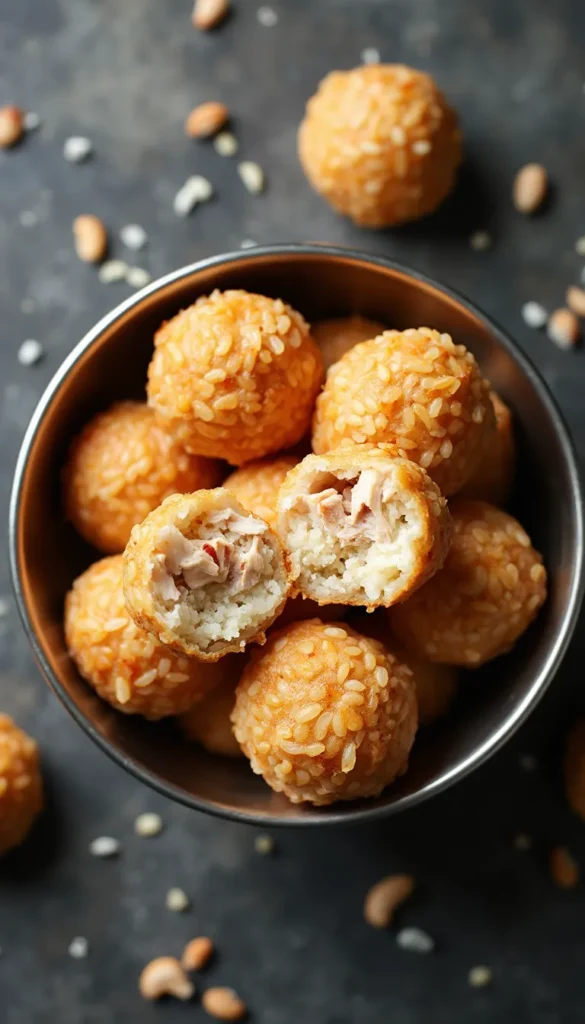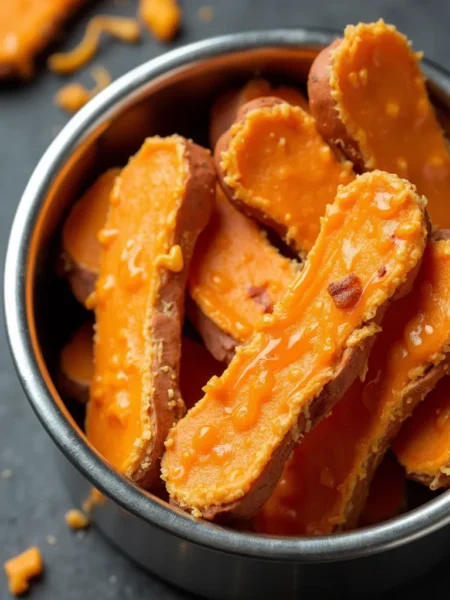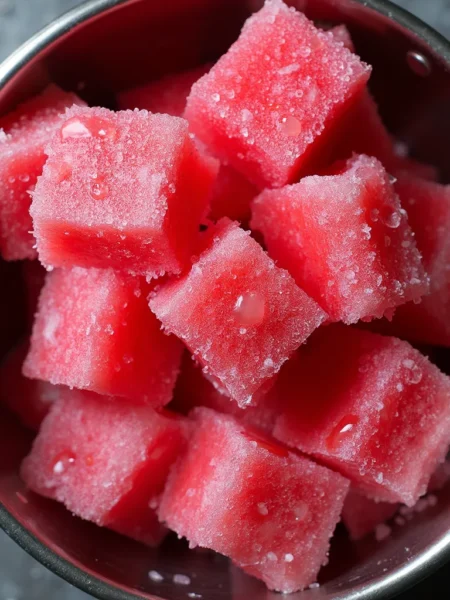Looking for the perfect homemade dog treat recipe? This easy-to-make healthy dog treat recipe has become a favorite among pet parents, with just two simple ingredients you probably already have in your kitchen! As someone who loves making homemade dog treats, I can tell you that these chicken and rice balls aren’t just economical – they’re also packed with natural goodness your pup will adore. Whether you’re searching for easy dog treat recipes for training sessions or just want to spoil your furry friend with healthy dog treats, this recipe delivers perfectly chewy, wholesome rewards every time.
Note: While this recipe has helped many dogs, remember to consult with your veterinarian before transitioning to any new homemade dog food recipes, as they can help customize portions and ingredients based on your pet’s specific needs.

Homemade Dog Treats: Chicken & Rice Balls (3 Ingredients)
Description
These simple homemade dog treats combine lean protein and gentle carbohydrates into soft, chewy training rewards. Perfect for pet parents looking for healthy dog treat recipes that are both nutritious and appealing to their furry friends.
Ingredients
Instructions
-
Combine your shredded chicken and cooked rice in a large mixing bowl until well mixed (2 minutes)
-
Test the mixture's consistency - if it's too dry, slowly add chicken broth one tablespoon at a time until it holds shape when pressed (1-2 minutes)
-
Shape your healthy dog treats into small, uniform 1-inch balls or patties (5 minutes)
-
Arrange the shaped treats on a parchment-lined baking sheet, leaving space between each (1 minute)
-
Bake your homemade treats at 350°F (175°C) for 15-20 minutes until they develop a slightly crispy exterior
-
Let your fresh dog treats cool completely before serving or storing
-
Serving Instructions:
- Small dogs (under 20 lbs): 1 treat per day
- Medium dogs (20-50 lbs): 2-3 treats per day
- Large dogs (over 50 lbs): 3-4 treats per day
-
Store leftover portions in airtight containers in the refrigerator for up to 5 days, or freeze for up to 3 months.



